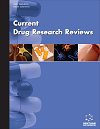
Full text loading...

The oral route is a preferred method for drug administration; however, lipophilic drugs often suffer from poor water solubility, significantly limiting their therapeutic effectiveness. Traditional approaches like complexation, micronization, and solid dispersion have been explored, but each comes with inherent limitations.
Self-Emulsifying Drug Delivery Systems (SEDDS) have emerged as a promising strategy to address solubility challenges. These systems incorporate drug molecules into a mixture of oils, surfactants, and cosolvents to enhance solubility. Ternary phase diagrams are frequently utilized to determine optimal component ratios for effective formulation.
SEDDS maintain drugs in a solubilized form within gastrointestinal fluids and protect peptide drugs from enzymatic degradation-a common issue in conventional formulations. They also facilitate the formation of stable emulsions at the target site, enhancing drug absorption. Additionally, the ability of SEDDS to traverse the blood-brain barrier (BBB) increases their applicability in treating neurological disorders.
The findings emphasize the utility of SEDDS in overcoming the solubility and stability challenges faced by poorly water-soluble drugs. Their capacity to enhance drug absorption and protect bioactive molecules from degradation aligns with current efforts to improve oral drug delivery systems. However, formulation complexities and variability in in vivo performance remain areas requiring further investigation.
This review outlines the formulation strategies, characterization methods, and evaluation techniques for SEDDS, emphasizing their potential in enhancing the bioavailability of poorly soluble drugs, particularly those aimed at the central nervous system. SEDDS offer a promising platform for improving therapeutic outcomes across diverse clinical settings.

Article metrics loading...

Full text loading...
References


Data & Media loading...